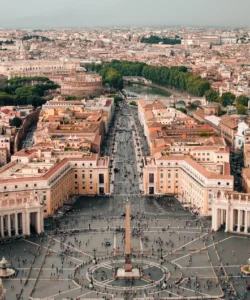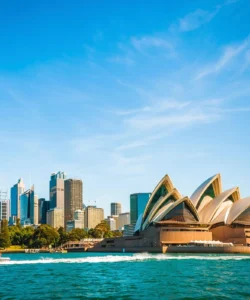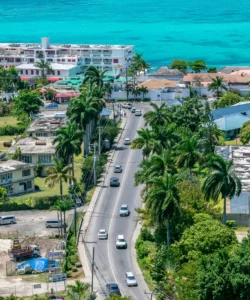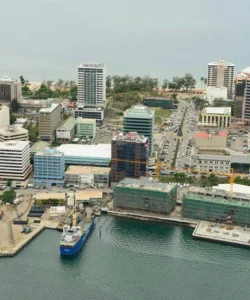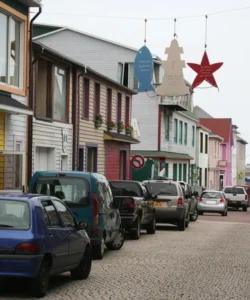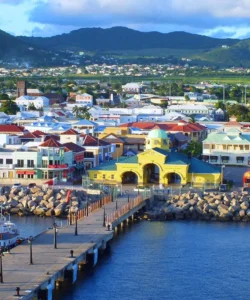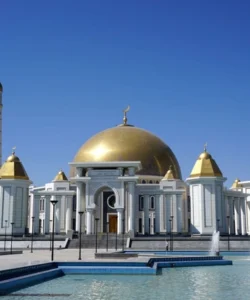Armenia, officially the Republic of Armenia, is a landlocked country in the South Caucasus region of Eurasia. It is known for its ancient history, mountainous landscapes, and rich cultural heritage.
Area: Approximately 29,743 sq km (11,484 sq mi).
Population: As of early 2024, the population is about 3 million people. A significant Armenian diaspora exists worldwide, totaling over 10 million.
Language: The official language is Armenian, with two modern standardized forms: Eastern Armenian and Western Armenian. Russian is also widely spoken.
Currency: The Armenian Dram (AMD).
Religion: The predominant religion is Christianity, with the Armenian Apostolic Church accounting for 95.2% of the population. Other religions include Catholicism, Evangelicalism, Yazidism, and Eastern Orthodoxy.
Capital: Yerevan.
Main Cities: Besides Yerevan, other significant cities include Gyumri, Vanadzor, Vagharshapat (Etchmiadzin), and Abovyan.
Attractions & Wonders:
- Lake Sevan: A large, high-altitude freshwater lake, often called the “Jewel of Armenia.”
- Dilijan: A resort town in the forested region, known for its natural beauty and traditional architecture.
- Garni Temple: A Hellenistic temple, the only standing Greco-Roman colonnaded building in Armenia.
- Geghard Monastery: A UNESCO World Heritage site, partially carved out of the adjacent mountain.
- Republic Square (Yerevan): The central square of Yerevan, known for its neoclassical architecture and singing fountains.
- Tatev Monastery: A medieval monastery complex offering breathtaking views, accessible by the “Wings of Tatev,” the world’s longest reversible aerial tramway.
- Zvartnots Cathedral: The ruins of a magnificent 7th-century cathedral, also a UNESCO World Heritage site.
- Khor Virap Monastery: An iconic monastery with a stunning view of Mount Ararat.
- Etchmiadzin Cathedral: The mother church of the Armenian Apostolic Church and a UNESCO World Heritage site, considered one of the oldest cathedrals in the world.
- Mount Aragats: The highest peak in Armenia, offering opportunities for hiking and viewing ancient rock art.
- Noravank Monastery: A 13th-century monastery nestled among red cliffs.
- Areni-1 Cave (Bird’s Cave): An archaeological site where the world’s oldest known winery and leather shoe were discovered.
- Armenian Genocide Memorial and Museum (Tsitsernakaberd): A somber and important site commemorating the victims of the Armenian Genocide.
Architecture: Armenian architecture is renowned for its distinctive style, characterized by monumental stone structures, often with conical domes, intricate carvings, and unique construction techniques. Highlights include:
- Ancient fortresses: Horom Citadel, Erebuni Fortress, Van Citadel.
- Early Christian churches and monasteries: Etchmiadzin Cathedral, Zvartnots Cathedral, Geghard Monastery, Tatev Monastery, Odzun Church, Sanahin Monastery, Haghpat Monastery.
- Medieval structures: Aghtamar Cathedral, Saint Stepanos Monastery of Julfa.
- Yerevan’s modern architecture: Republic Square, Cascade Complex, Yerevan Opera House, Blue Mosque.
Roads: Roads in rural areas can be poorly maintained, with insufficient lighting, bad markings, potholes, and unpaved sections. During winter, snow clearing can be poor. Landslides are also a possibility. Travelers should exercise caution, monitor local media for road conditions, and follow local authorities’ instructions.
Hotels: Armenia offers a range of accommodation options, from international chain hotels in Yerevan to boutique hotels, guesthouses, and homestays throughout the country, particularly in popular tourist areas like Dilijan and Jermuk.
Restaurants & Cuisine: Armenian cuisine is rich and flavorful, known for its use of meat, cheeses, herbs, and spices.
- Popular dishes to try:
- Khorovats: Armenian BBQ, typically grilled meat (pork or beef) with vegetables.
- Tolma (Dolma): Minced meat and rice wrapped in grape leaves or vegetables.
- Kufta: Meatballs.
- Spas: A cold sour milk soup.
- Zhengyalov Hats: Flatbread with various greens, a popular vegetarian dish.
- Ishkhan: Sevan trout, often prepared as a kebab or with spices.
- Manti: Small baked dumplings, often served with yogurt sauce or broth.
- Gouvaj: A lamb and vegetable stew.
- Lavash: Traditional Armenian flatbread, often baked in a tonir (clay oven).
- Notable beverages: Tan (yogurt drink), mineral water (Jermuk), local wine, and Armenian brandy (cognac).
- Famous Restaurants (especially in Yerevan): Gata Tavern, Sherep Restaurant, Lavash Restaurant, Dolmama, Charentsi 28, Wine Republic, Dargett Brewpub, The Club (for live music), Tufenkian Kharpert Restaurant.
Annual Travel / Best Time to Visit:
The best time for general sightseeing and touring is typically May and June, or late September and October.
- Spring (May-June): Wildflowers are in bloom, landscapes are green, and temperatures are pleasant, though it can be stormy.
- Autumn (Late September-October): Long, sunny, and mild days with beautiful fall foliage, especially in Dilijan National Park. This is also a great time for food and wine lovers, with grape harvest in late September and wine festivals in early October.
- Summer (June-September): Hotter, especially in Yerevan, but ideal for hiking and trekking in the mountains.
- Winter (December-February): Cold and snowy, offering a different kind of beauty, especially for those interested in winter sports or seeing snow-covered landscapes and monuments.
Travel Advisories:
- Normal Security Precautions: Generally, take normal security precautions in Armenia.
- Border Areas: Avoid all travel within 5 km of the eastern border with Azerbaijan due to a volatile security environment and risk of armed conflict. Avoid non-essential travel within 1 km of the border with the Azerbaijani Autonomous Republic of Nakhchivan due to the risk of armed clashes.
- Safety Tips: Keep car and home doors locked, windows closed, and don’t leave personal items in plain sight in a vehicle. Secure your passport and other travel documents. Avoid showing signs of affluence.
- Road Conditions: Rural roads can be poorly maintained and dangerous. Monitor local media for updates on road conditions, stay away from flooded areas, and follow instructions from local authorities, especially regarding landslides or evacuation orders.

